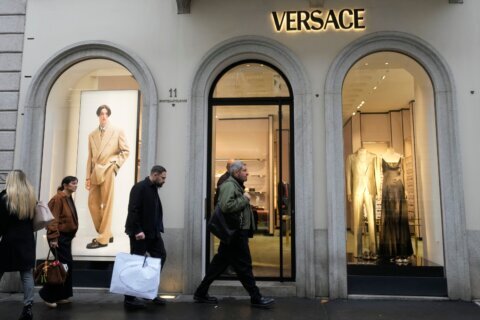Are the walls of your office building going to crumble if you’re showing 3 inches of thigh below a summer skirt? No. Will a potential client throw down his hands in disgust and shout “no deal” if you arrive at his meeting wearing a sleeveless sheath? Probably not.
But will your boss struggle to visualize you as a team leader when your pink bra straps are poking out from under that sleeveless sheath? And will you feel off your game as you spend the day adjusting said straps? Count those as two maybes.
What we wear is important because, “No. 1, the image we project is a brand of who we are,” says Diane Gottsman, national etiquette expert and owner of The Protocol School of Texas. “No. 2, we generally feel like we dress. So if we feel good about what we’re wearing, we’re going to project a more confident image.”
Here’s how to ensure your summer office wardrobe does you and your personal brand justice:
Take a cue from your boss. “Look around at the top 25 percent of your peers. How are they dressing?” asks Joanne Blake, corporate image consultant and president and owner of the Canadian firm Style for Success. “What about the decision-makers, and what about the person whose job you covet or aspire to have one day — how are they dressed?” (What’s that bit about dressing for the job you want?) If your boss doesn’t sport flip-flops or tanks, then neither should you.
This strategy isn’t meant to turn you into a corporate clone or spur dystopian sandal-burning rituals. Rather, the idea is to dress in a way that makes it easy for others to see you as a professional who should be taken seriously. As Blake puts it: “We can borrow from the authority of our clothing.”
Of course, professional dress codes vary among industries and companies. The CEO of a tech startup and the partner of a law firm, for example, may have different views on jeans in the workplace. Hospitality industries and those that are more conservative, such as law, investing, counseling and insurance, have a higher bar for work apparel, Blake says, adding: “If you’re looking after people’s finances or personal affairs, they want you to look trustworthy.”
Whatever the dress code for your company and industry, remember that colleagues and clients will base perceptions of you partially on your clothing. So if your office is more of a jeans-and-T-shirt environment, at least make sure that T-shirt is clean and unwrinkled.
Save your revealing summerwear for the weekend. Yes, it’s hot out. No, that doesn’t mean you can pass off that romper as office wear. “In business, the more skin we show, the more credibility we lose,” Blake says. To ensure your look is more appropriate for the boardroom than the boardwalk, try these tests:
— Short skirts and dresses: How much leg is too much? “If you sit down, and your skirt is mid-thigh, it’s too short,” Gottsman says. Another way to gauge skirt-length appropriateness: Place a business card horizontally directly above the knee, Blake says. A skirt should hang to at least that length when standing up.
— Low-cut shirts: Blouses should fall at least 2 inches above your cleavage, Gottsman says. As a test, Blake suggests leaning forward, like you’re passing out materials in a meeting. “If you’re showing more than a hint of cleavage, then it’s too much,” she says.
— Cropped shirts: Blake suggests reaching up, like you’re grabbing a file from the top shelf. If your shirt shifts and exposes your stomach, it’s a no-go.
— Sleeveless tops and dresses: “The protocol is: It should have a sleeve,” Gottsman says. “The reality is: Often many, many companies allow you to wear a nice, basic sheath.” She advises checking the company dress code for a verdict on sleeves. Whatever it says, she recommends keeping a blazer or cardigan on hand for air-conditioned offices and unplanned meetings.
For good measure, go ahead and save the following items for your weekend-only wardrobe: sun dresses, rompers, shorts, flip-flops, tank tops, anything that’s sheer or includes cut-outs, and anything that exposes bra straps or underwear. In fact, if you look in the mirror and wonder if what you’re wearing is appropriate for the office, then it probably isn’t. As Blake puts it: “When in doubt, leave it out.”
If you want to inject a sunny, summertime feeling into your office wardrobe without looking like a beach bum, Gottsman and Blake suggest doing so with colorful and seasonal patterns, colors, accessories, shoes and handbags. “Accessories are one way you can really showcase your personality,” Blake says. “And with handbags, you don’t have to squeeze into a certain size.”
Dress for comfort and piece of mind. Sticking to office-appropriate clothing isn’t just a matter of looking professional — although that’s important. But doing so will feel more comfortable and thus boost your productivity. For example, this is your brain on a questionable V-neck blouse: This isn’t too low-cut, is it? Why did so-and-so give me that look? Is my bra showing? Oh, geez, when I bent over in that meeting, I think everyone could see down my shirt. Alternatively, this is your brain on a conservative top: Work, work, work, work, work.
There should be no need to tug at your clothes or worry about how they look. “Comfort is important. You need to look good, but then forget about what you’re wearing,” Blake says. “You don’t want your clothing to stand in the way of your presentation, ideas and skills.”
More from U.S. News
10 Wardrobe Musts For Your Next Interview
15 Career Mistakes to Avoid in 2015
Does Your Summer Office Attire Make You Look Unprofessional? originally appeared on usnews.com







